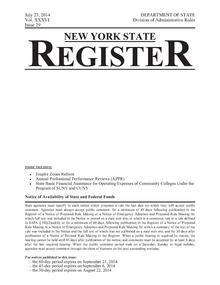Empire State Development (ESD) is the umbrella organization for New York's two principal economic development public-benefit corporations, the New York State Urban Development Corporation (UDC) and the New York Job Development Authority (JDA). The New York State Department of Economic Development (DED) is a department of the New York government that has been operationally merged into ESD.

Government procurement or public procurement is the procurement of goods, services and works on behalf of a public authority, such as a government agency. Amounting to 12 percent of global GDP in 2018, government procurement accounts for a substantial part of the global economy.

The Government of the State of New York, headquartered at the New York State Capitol in Albany, encompasses the administrative structure of the U.S. state of New York, as established by the state's constitution. Analogously to the US federal government, it is composed of three branches: executive, legislative, and judicial. The head of the executive is the governor. The Legislature consists of the Senate and the Assembly. The Unified Court System consists of the Court of Appeals and lower courts. The state is also divided into counties, cities, towns, and villages, which are all municipal corporations with their own government.

The law of California consists of several levels, including constitutional, statutory, and regulatory law, as well as case law. The California Codes form the general statutory law, and most state agency regulations are available in the California Code of Regulations.
The California Code of Regulations is the codification of the general and permanent rules and regulations announced in the California Regulatory Notice Register by California state agencies under authority from primary legislation in the California Codes. Such rules and regulations are reviewed, approved, and made available to the public by the Office of Administrative Law (OAL), and are also filed with the Secretary of State.
The law of Florida consists of several levels, including constitutional, statutory, and regulatory law, as well as case law and local law. The Florida Statutes form the general statutory law of Florida.
The New York City Law Department, also known as the Office of the Corporation Counsel, is the department of the government of New York City responsible for most of the city's legal affairs. The department is headed by the Corporation Counsel, currently Sylvia Hinds-Radix, the 81st official to hold this position.
The New York Codes, Rules and Regulations (NYCRR) contains New York state rules and regulations. The NYCRR is officially compiled by the New York State Department of State's Division of Administrative Rules.

The New York State Department of State (NYSDOS) is the department of the New York state government under the leadership of the Secretary of State of New York. Its regulations are compiled in title 19 of the New York Codes, Rules and Regulations.

The New York State Department of Financial Services is the department of the New York state government responsible for regulating financial services and products, including those subject to the New York insurance, banking and financial services laws.
The law of Virginia consists of several levels of legal rules, including constitutional, statutory, regulatory, case law, and local laws. The Code of Virginia contains the codified legislation that define the general statutory laws for the Commonwealth.

The law of New York consists of several levels, including constitutional, statutory, regulatory and case law, and also includes local laws, ordinances, and regulations. The Consolidated Laws form the general statutory law.
The law of Texas is derived from the Constitution of Texas and consists of several levels, including constitutional, statutory, and regulatory law, as well as case law and local laws and regulations.
The law of Pennsylvania consists of several levels, including constitutional, statutory, regulatory and case law. The Pennsylvania Consolidated Statutes form the general statutory law.
The law of the U.S. state of Georgia consists of several levels, including constitutional, statutory, and regulatory law, as well as case law and local law. The Official Code of Georgia Annotated forms the general statutory law.
The law of Michigan consists of several levels, including constitutional, statutory, regulatory and case law. The Michigan Compiled Laws form the general statutory law.
The law of North Carolina consists of several levels, including constitutional, statutory, regulatory, case law, and local law.
The law of Massachusetts consists of several levels, including constitutional, statutory, regulatory, case law, and local ordinances. The General Laws of Massachusetts form the general statutory law.
The law of Washington consists of several levels, including constitutional, statutory, regulatory and case law, as well as local ordinances. The Revised Code of Washington forms the general statutory law.

The City Record is the official journal of New York City. It is published each weekday and contains legal notices produced by city agencies, including notices of proposed and adopted rules, procurement solicitations and awards, upcoming public hearings and meetings, public auctions and property dispositions, and selected court decisions. Despite the publication's importance, long history, and influence—many city projects are required to be announced in the paper—the existence of the Record is not well known.





